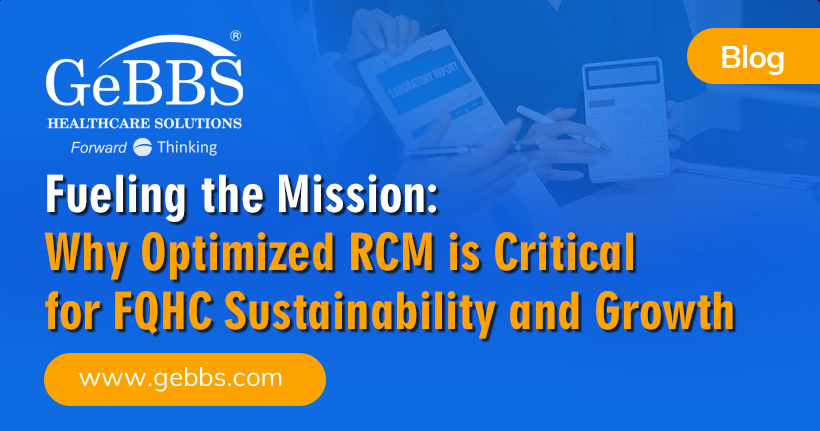Did you know that between March and July 2021, close to 19 million people in the healthcare sector quit their jobs? Yes, it seems the Great Resignation is now upon us, adding to the long list of changes to how differently we all do business since the pandemic era has begun.
Even before COVID-19 emerged, many healthcare workers were experiencing high degrees of stress and exhaustion from their jobs. But these struggles became even more acute since the coronavirus crisis, which has caused significant public health dangers, overwhelmed hospitals and financially strained medical practices.
To reduce staff burnout and help to alleviate related operational and economic concerns, it is vital that healthcare providers optimize – perhaps by outsourcing – revenue cycle management (RCM).
High employee turnover leads to higher costs
When an employee leaves a practice or a healthcare company, whether they are patient-facing or front/back-office staff, it creates several directly and indirectly related expenses. The processes of termination, recruitment, onboarding, and orientation are all added costs to other staff members’ time and to the bottom line.
For quite some time, the answer to many of these problems has been to provide incentives and other methods to retain staff. But the days of offering Ping Pong breaks at the office are over. Workers want to be valued and find value in their work, and those who don’t feel this way quickly become burnt out, then continue down the slippery slope until resignation.
With industry experts estimating the average cost of healthcare turnover (across all occupations) at around $60,000, organizations need to find solutions to keeping employees feeling engaged and valued.
Reduce burnout and gain financial stability by improving RCM
Inefficient revenue cycle management can cost healthcare companies millions of dollars a year, even before the pandemic. To prevent burnout and help bolster financial stability, healthcare organizations need to change their mindset and take steps to innovate, shift and streamline their internal operations. One prime area for automation and optimization is revenue cycle management.
RCM work is typically task-driven, manual work that is resource-intensive, often menial and prone to create boredom and burnout. Some tasks cannot be automated (i.e., patient interaction, dynamic decision-making), but the opportunity to improve and alleviate the tediousness of areas such as medical billing, coding, and patient registration would generate savings and improve employee engagement.
Healthcare RCM solutions can reduce error-prone work, such as manual data entry, and minimize boredom. Deploying RCM technology can:
- Provide a centralized and streamlined platform where staff can collaborate to provide better patient experiences and lower costs.
- Reduce tedious and menial work by automating many healthcare administration processes (i.e., filing and repeating requests for medical documents).
- Allow staff to concentrate on organizational goals and not data entry.
Start improvement mindset by assessing RCM data points
First, any healthcare organization must understand its fundamental revenue cycle key performance indicators (KPIs). These could include data points such as days in accounts receivable (A/R), clean claim rates, collections per visit, and other metrics.
Once data is captured and analyzed, organizations need to look for trends in these KPIs. Opportunities to make improvements and changes to performance should present themselves in the story that the data tells.
Front-office best practices that can benefit from RCM technology solutions
- Capturing all data points from all aspects, from the front office to the appointment itself, from back-office billing to collections.
- Capturing up-to-date patient data collection once appointments are scheduled, allowing for having eligibility and benefits checked before the patient arrives.
- Gathering updated information on each payer’s rules and requirements to build cleaner claims. If you have an online portal appointment, patients should be required to provide current demographics and insurance information upon registration.
- Communicating all financial policies, co-pays collection, and any outstanding balances before the appointment.
- Providing payment plan options for patients with large balances, which can help increase income and reduce write-offs over time.
- Upon patient arrival to appointments, documenting all interactions and capturing details about the care provided.
- For telehealth and remote health options, making sure coding is accurate so as not to lose the ability to be reimbursed.
- Maintaining clear clinical documentation and the data surrounding appointments to make for more efficient claims and reduce the chance of rejections or denials.
Back office best practices that could benefit from RCM technology
- Reconciling payments daily to catch and correct any billing or coding errors before they become a bigger problem that could delay or deny reimbursements owed.
- Implementing daily payment posting to streamline billing procedures and improve practice cash flow.
Optimizing revenue cycles is a process and needs to be planned and executed properly to render the benefits of staff stress reduction and bottom-line savings. As mentioned above, stress is one of the first signs of employee burnout, leading to reduced productivity and costly resignations. Deploying an RCM system that eliminates menial tasks can help increase employees’ feeling of worth.
Applying an RCM solution is not a matter of developing specialized, macro-driven internal spreadsheets. You should bring in a trusted partner who knows both the industry and technology.
Partners like this will have a shared interest in improving and achieving your goals. Whether financial performance or patient reviews about billing processes, a trusted partner will have a roadmap and the know-how to help you achieve success.
Once RCM processes are streamlined, you can worry less about staff burnout and your financial health and focus more on patient care.
GeBBS is committed to your RCM success
Quality revenue cycle management and billing solutions are critical drivers to the financial success of healthcare organizations. When managed properly, they can save money.
This is why you need a partner with a deep understanding of the revenue cycle process, proper technology tools, and industry experience to help you deploy solutions successfully.
GeBBS Healthcare Solutions has the expertise, operational excellence, and sophisticated approach to make sure you get tailored revenue cycle management solutions. We deliver RCM coding solutions specific to your needs that work with your host system and tools.
Let GeBBS’s world-class experts help you achieve your RCM goals by requesting a consultation today.






